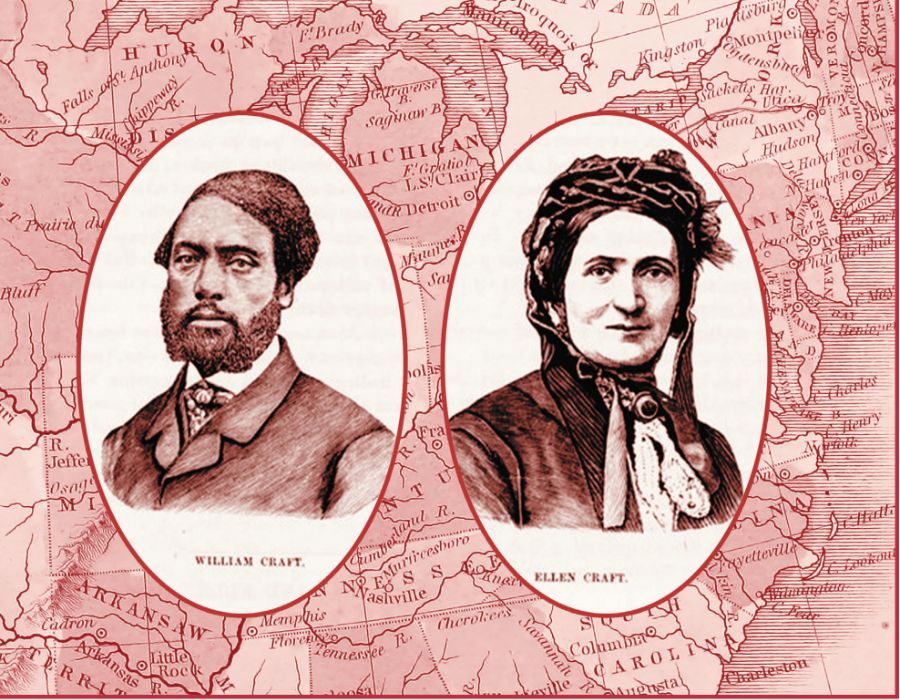With incredible bravery and determination, Ellen Craft, a former slave, devised a remarkable plan to escape from bondage and fight for her freedom in the 19th century. Her daring escape, masquerading as a white man traveling with her husband, challenged societal norms and showcased the strength and resilience of enslaved individuals. Ellen Craft’s story is a testament to the power of human spirit and the unwavering pursuit of liberty in the face of adversity.

The Early Years of Ellen Craft
Birth and Life as a Slave
Craft was born in 1826 in Clinton, Georgia, as a slave of the wealthy Smith family. Growing up, she experienced the brutalities and harsh conditions of slavery, separated from her family and forced to endure the oppressive system of servitude. Despite the challenges she faced, Craft showed remarkable resilience and determination from a young age.
The Unique Challenges Ellen Faced
Early on, Craft faced unique challenges as a light-skinned mixed-race woman, which made her vulnerable to exploitation and abuse. Her fair complexion allowed her to pass as a white person, presenting both opportunities and dangers. The constant fear of discovery meant that Craft had to navigate a complex web of deceit and secrecy to protect herself and her freedom.
Another significant challenge Ellen faced was the limited access to education and opportunities for personal growth. As a woman enslaved in a society that denied her basic rights and freedoms, Ellen had to fight against the oppressive forces that sought to keep her ignorant and powerless.
The Great Escape
Planning the Escape
Great risks were taken by Ellen and William Craft when they decided to plot their daring escape from slavery. Ellen, who was fair-skinned, disguised herself as a white man and William, as her slave, claimed she was traveling for medical treatment. Their meticulous planning involved creating elaborate disguises and memorizing backstories to avoid suspicion.
Execution and Journey to Freedom
Freedom was a destination Ellen and William Craft were determined to reach, despite the dangers that lay ahead. With nerves of steel, Ellen and William launched on a perilous journey by train, boat, and carriage, covering nearly 1,000 miles. They faced numerous close calls with slave catchers and law enforcement, but their wit and quick thinking helped them evade capture.
Another crucial aspect of the escape was Ellen’s bravery in assuming the role of a white man while traveling through slave states. Any mistake could have led to discovery, but Ellen remained composed and resolute, masking her fear behind a façade of confidence.
Life After Slavery
Ellen’s Activism and Abolitionist Efforts
Many may wonder what became of Ellen Craft after she and her husband, William, gained their freedom. Life after slavery led Ellen to become a prominent figure in the abolitionist movement, using her own experiences to advocate for the rights of enslaved individuals.
Ellen Craft’s Impact on Contemporary Views on Slavery
Views on slavery were significantly influenced by Ellen Craft’s daring escape and subsequent activism. Her story challenged the prevailing beliefs of the time and sparked conversations about the inhumanity of slavery and the importance of fighting for freedom.
For instance, Ellen Craft’s account of disguising herself as a white man to escape slavery highlighted the extreme measures individuals would take to break free from the bonds of oppression. Her bravery and resilience served as a powerful example for others, inspiring them to question the institution of slavery and work towards its abolition.
Ellen Craft’s Legacy
Now, let’s research into Ellen Craft’s enduring legacy and how she continues to inspire people today.
Remembrance in Literature and Arts
Craft’s captivating story has left a mark on literature and the arts. Her daring escape from slavery has been retold in numerous books, plays, and even visual artworks. Craft’s courage and determination have served as a powerful muse for many artists seeking to shed light on the struggles of enslaved individuals and the fight for freedom.
Educational Contributions and Memorials
Educational institutions and memorials dedicated to Ellen Craft serve as a lasting tribute to her remarkable life and contributions. Several schools and organizations have been named in her honor, symbolizing the importance of her story in educational settings. These memorials not only celebrate Craft’s bravery but also serve as a reminder of the enduring fight for equality and justice.
FAQ
Q: Who was Ellen Craft?
A: Ellen Craft was an African American woman who escaped from slavery and became a prominent abolitionist and women’s rights activist.
Q: How did Ellen Craft escape from slavery?
A: Ellen Craft, who was fair-skinned, disguised herself as a white man and traveled with her husband William Craft, who posed as her slave. They traveled by train and steamship from Georgia to Philadelphia, where they ultimately gained their freedom.
Q: What impact did Ellen Craft have on the abolitionist movement?
A: Ellen Craft’s daring escape and her subsequent activism shed light on the horrors of slavery and inspired others to fight for freedom and equality. She spoke at abolitionist meetings, shared her story in newspapers, and worked to end the institution of slavery.
Q: How did Ellen Craft fight for women’s rights?
A: Ellen Craft was a vocal advocate for women’s rights and believed that women should have the same rights and opportunities as men. She worked alongside prominent suffragists like Susan B. Anthony and Elizabeth Cady Stanton to secure voting rights for women.
Q: What is Ellen Craft’s legacy?
A: Ellen Craft’s courage, determination, and activism continue to inspire people to this day. She paved the way for future generations of activists fighting for freedom, equality, and justice for all. Her story serves as a powerful reminder of the resilience of the human spirit in the face of adversity.
See also our article: Yasuke: The fascinating story of the first black samurai










